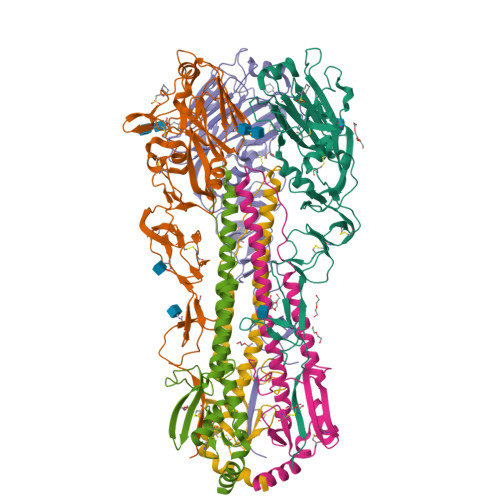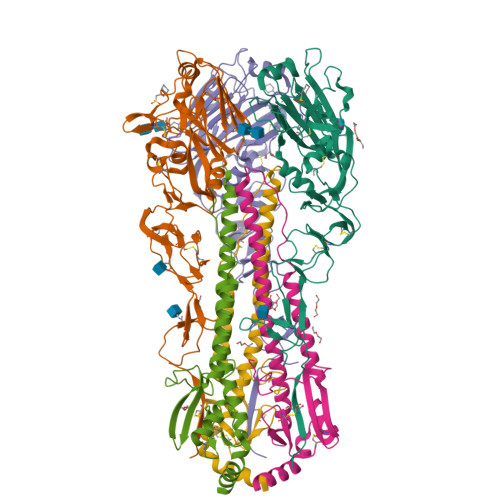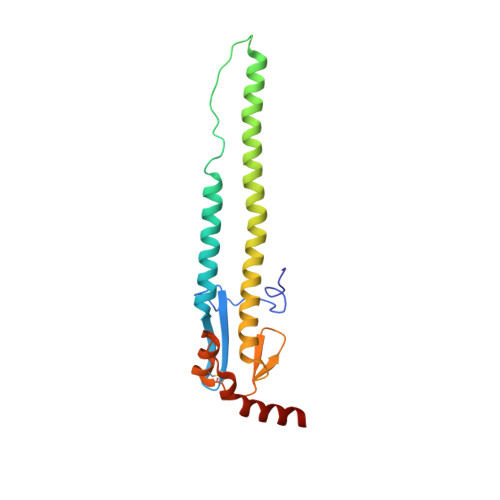A small-molecule fragment that emulates binding of receptor and broadly neutralizing antibodies to influenza A hemagglutinin.
Kadam, R.U., Wilson, I.A.(2018) Proc Natl Acad Sci U S A 115: 4240-4245
- PubMed: 29610325
- DOI: https://doi.org/10.1073/pnas.1801999115
- Primary Citation of Related Structures:
6CEX, 6CF5 - PubMed Abstract:
The influenza virus hemagglutinin (HA) glycoprotein mediates receptor binding and membrane fusion during viral entry in host cells. Blocking these key steps in viral infection has applications for development of novel antiinfluenza therapeutics as well as vaccines. However, the lack of structural information on how small molecules can gain a foothold in the small, shallow receptor-binding site (RBS) has hindered drug design against this important target on the viral pathogen. Here, we report on the serendipitous crystallization-based discovery of a small-molecule N -cyclohexyltaurine, commonly known as the buffering agent CHES, that is able to bind to both group-1 and group-2 HAs of influenza A viruses. X-ray structural characterization of group-1 H5N1 A/Vietnam/1203/2004 (H5/Viet) and group-2 H3N2 A/Hong Kong/1/1968 (H3/HK68) HAs at 2.0-Å and 2.57-Å resolution, respectively, revealed that N -cyclohexyltaurine binds to the heart of the conserved HA RBS. N -cyclohexyltaurine mimics the binding mode of the natural receptor sialic acid and RBS-targeting bnAbs through formation of similar hydrogen bonds and CH-π interactions with the HA. In H3/HK68, N -cyclohexyltaurine also binds to a conserved pocket in the stem region, thereby exhibiting a dual-binding mode in group-2 HAs. These long-awaited structural insights into RBS recognition by a noncarbohydrate-based small molecule enhance our knowledge of how to target this important functional site and can serve as a template to guide the development of novel broad-spectrum small-molecule therapeutics against influenza virus.
Organizational Affiliation:
Department of Integrative Structural and Computational Biology, The Scripps Research Institute, La Jolla, CA 92037.






















